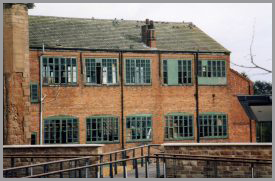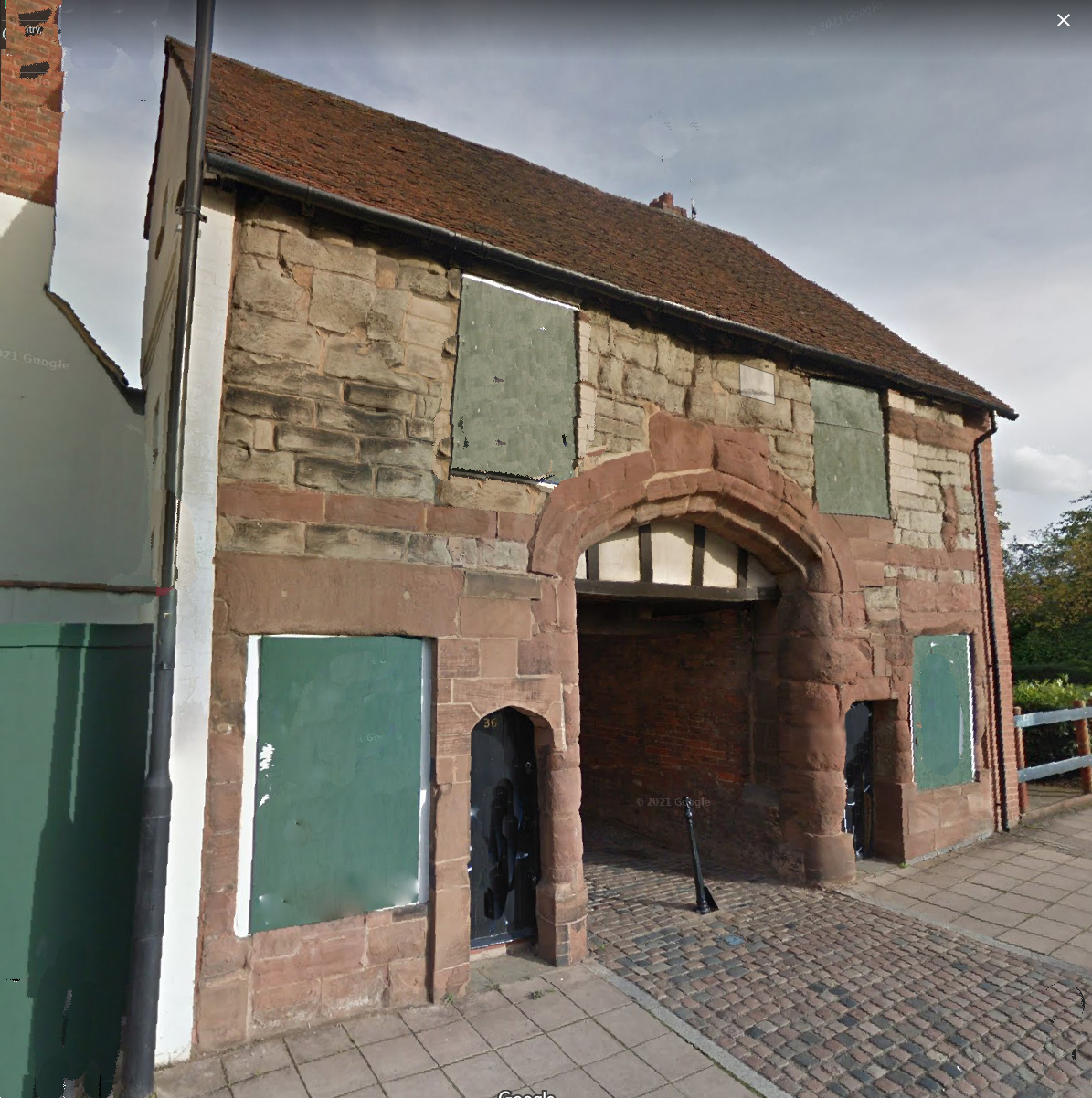 The town of Coventry, where the Greenaways lived, has several claims
to fame, including Lady Godiva, and the British silk industry of the
18th and 19th centuries. This artwork on the Lady Godiva procession,
by Thomas Stevens, was woven in silk, thus linking these two aspects
of Coventry history.
The town of Coventry, where the Greenaways lived, has several claims
to fame, including Lady Godiva, and the British silk industry of the
18th and 19th centuries. This artwork on the Lady Godiva procession,
by Thomas Stevens, was woven in silk, thus linking these two aspects
of Coventry history. Charles Bird Greenaway
(1794-1845)
&
Mary Gould (1792-1876)
This block will be replaced by LeftMenuGaffey (orByrnes) when the
page is served from a server.
- Father:
- James Greenway (1754-1840)
- Mother:
- Mary Bird (1756-1826)
- Baptism:
- 13 March, 1794, Coventry, Warwickshire, England.
- Father:
- William Gould (b. 1749)
- Mother:
- Mary Whadcock (b. 1758)
- Birth/Baptism:
- 26 February, 1792, Chilvers Coton, Warwickshire.
- Marriage:
- 11 December 1815 Chilvers Coton, Warwickshire
- Children:
- Rebecca (b.1816-1849)
- Mary (1818-c1853)
married Samuel
Archer, 1841, Walmer,
Kent, England - Charles (b.1820)
- Elizabeth (1822 - bef 1826)
- George (1823-1824)
- Elizabeth (b.1826)
- Sarah (b.1828)
- John (b.1831)
- Martha (1833-1843)
Charles:
Mary:
In the first
quarter of the 19th century, the city of Coventry, in Warwickshire, was
an important manufacturing centre noted for its watchmaking and textile
industries, in particular fine ribbons and laces. Although the city
walls and many of the old gates were long gone, it was still surrounded
by common land controlled by the freemen of the city. An Act of
Parliament was required to enclose this land; only a very brave
politician would move to curtail his voters' grazing rights, with the
result that building was restricted to a well-defined area. By the time
Charles and Mary started their family, about 30-thousand people lived
within a two-and-a-half mile circuit. Cottages were built in what had
been the gardens of larger houses, forming enclosed courts of up to 15
small, crowded dwellings with only one entrance from the street. Ribbon
manufacturers, slaughterhouses, shops, hotels, warehouses, public
buildings and stables were built right up to the walls of Holy Trinity
church, where several of Charles and Mary's children were baptised.
According to a Warwickshire local history site, Coventry had been involved in the silk trade since the 17th century. Originally silk was woven on hand-looms in people’s houses. There was considerable opposition to mechanisation, but eventually factories like this (at right) replaced home-working. By the middle of the 19th century, half the working population of Coventry was employed in the silk industry.
(Photo 2001 of an old ribbon weaving
factory by Anne Langley)

 In
the first general UK census in 1841, the family's name was mis-spelled as
"Grinaway" (and indeed the spelling varied frequently between Greenway and
Greenaway over the years) The 1841 census was notorious for being
elastic as to the ages of adults, and both Charles and Mary were said to
be 45 years old. At that time, they were living in Much Park street,
in the parish of St Michael in inner Coventry, with four of their children
still at home - (our) Mary, with her sisters Sarah and Martha, and her
brother John. The eldest girls, Mary and Sarah along with their
parents are listed as being weavers. At the time of this census,
John was 11 years old, and Martha only 7. Within two years, 10 year
old Martha had died of consumption (tuberculosis), and was buried at St
Michael's church in June, 1843.
In
the first general UK census in 1841, the family's name was mis-spelled as
"Grinaway" (and indeed the spelling varied frequently between Greenway and
Greenaway over the years) The 1841 census was notorious for being
elastic as to the ages of adults, and both Charles and Mary were said to
be 45 years old. At that time, they were living in Much Park street,
in the parish of St Michael in inner Coventry, with four of their children
still at home - (our) Mary, with her sisters Sarah and Martha, and her
brother John. The eldest girls, Mary and Sarah along with their
parents are listed as being weavers. At the time of this census,
John was 11 years old, and Martha only 7. Within two years, 10 year
old Martha had died of consumption (tuberculosis), and was buried at St
Michael's church in June, 1843.